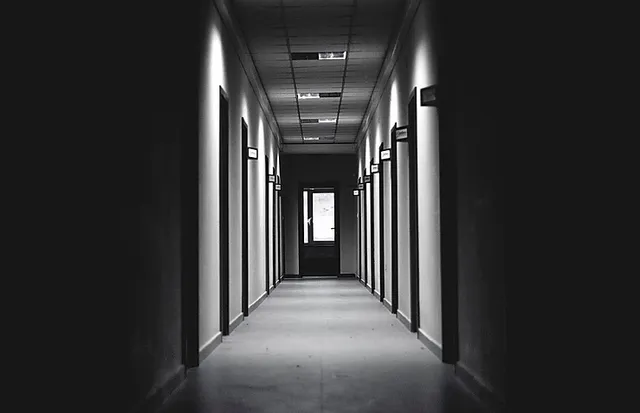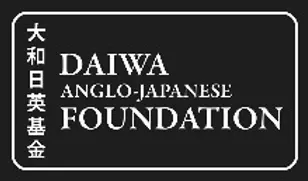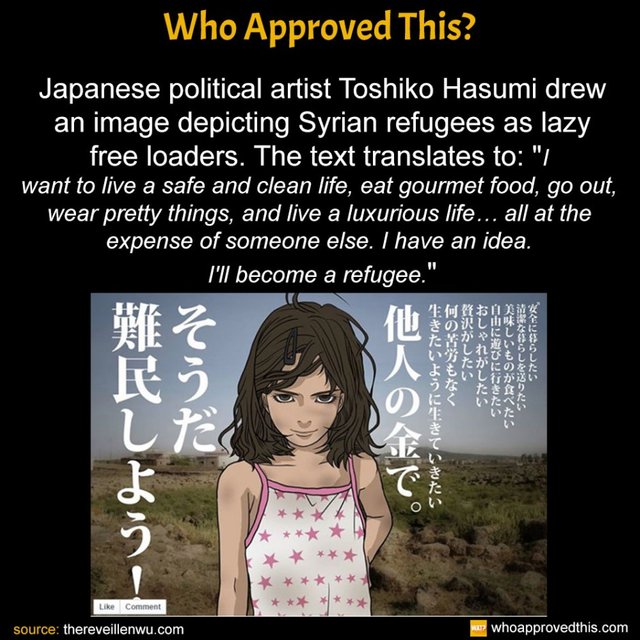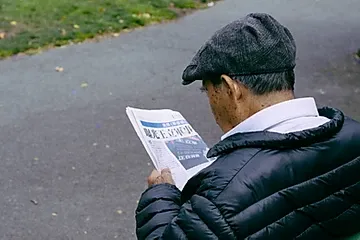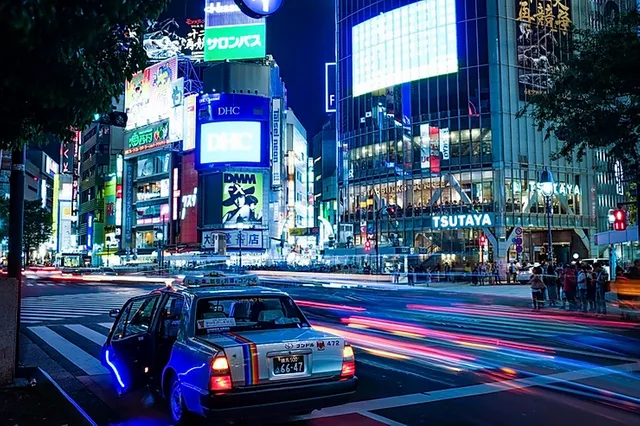Guarding the Heavenly Gate: Foreign Refugee Flows into Japan.
Originally posted here on 8th July 2019: https://www.idsockcl.com/post/guarding-the-heavenly-gate-foreign-refugee-flows-into-japan
On the 14th of March, the Daiwa Anglo-Japanese Foundation presented a seminar on the topic of the struggles refugees face when applying for asylum in Japan. The seminar was presented by Prof. David H. Slater (Cultural Anthropology, Sophia University, Tokyo) and chaired by Naoko Hashimoto, (Associate Tutor / PhD candidate, University of Sussex, Research Associate of the Refugee Law Initiative, University of London.)
Japan has had a large presence on the global stage regarding its efforts on foreign aid, being the fourth largest contributor to the UNHCR (the UN Refugee Agency) in 2018, but this ignores the fact that the rate of acceptance of refugees from Syria, Nigeria and Uganda and many others is startlingly low, a meagre 20 refugees were accepted into the country in 2018, contrasted with the 15,891 given protection by the UK in the same year. Regarding this discrepancy, Japan argues however that those who can afford the expense of coming to Japan to apply for refugee status are in less need of financial aid and support than those who remain behind in their countries of origin. This policy, critically referred to by foreign media as an ‘open wallet, closed doors’ stance to the Syrian refugee crisis, has put pressure on Japan by the UN and the international community to do more than simply throw money at the problem to keep refugees at bay.
This issue was further exacerbated by the propagation of an infamous Facebook post by conservative manga artist Toshiko Hasumi, depicting a Syrian girl showing her inner thoughts: ‘I want to live my life without a care in the world- at the expense of someone else... I have an idea, why don’t I become a refugee?’ While this did spark outrage, with Facebook having been forced to remove the image, it gives us an unsettling insight as to why refugee acceptance rates might be so low; stereotypes of free-riding refugees are present in the public consciousness.
One case study presented at the seminar was that of Peter, a Nigerian refugee who fled Boko Haram’s presence in his country due to his Christian beliefs. He now teaches English in Japan but finds his situation difficult. Refugees can find it challenging to fully integrate into society due to endogenous social mores that are rarely discussed, such as the concept of ‘Uchi-Soto’, (inside-outside). This is a method of dividing between in-groups that the person belongs to and out-groups that the person is interacting with given the situation. In this context, ‘Gaijin’ (foreigners)—though are able to speak Japanese and have been naturalised, still face challenges in Japan. Despite Peter’s status as an English teacher and speaking Japanese to a high degree of fluency, he constantly faces such discrimination, marked as a ‘Soto’ person, taking many myriad forms such as exclusion from invitations and social events with other teachers, to even not receiving correct wages. Coupled with the inability for him to invite his family members from Nigeria, this creates a safe but alienating environment for him. He states he is “Grateful for his safety but cannot help but feel like a second-class citizen.”
It is no close-kept secret that Japan faces a population crisis, given the longevity of its aging population and constantly declining birth rate. Many social, historical and institutional factors contribute to this phenomenon, such as the high infant mortality post WWII and huge leaps in gerontologic medicine that prolonged the life of the elderly.
Given these factors, an increase of accepted immigrants would be beneficial for Japan, filling open positions that are undersupplied, especially in the non-manufacturing fields that have held back the rise of automation in Japan. However, there exists a strong bias with fears of crime rates rising due to immigration. In an analysis between seven counties, Japan was highlighted as expressing a greater percentage of opinions that ‘that immigrants increase crime levels.’ Furthermore, in a study examining 10,000 respondents in Japan, results showed that given the populations strong support of status-quo bias, most respondents were mostly against foreign workers.
This is all being said without a more-worrisome issue coming to light. Those who apply for refugee status live in Japan under the fear of deportation, with absurd cases of vulnerable people such as Mesut Gür, who lived in Japan for 11 years, escaping racial violence at the Syrian-Kurdish border. Despite constantly reapplying every two months, his application for refugee status had been declined, and he now faces deportation. These temporary migrants form a large part of the workforce that perform undesirable but necessary Japanese jobs such as demolition, construction and refuse collection.
However, action is being taken by NGOs and individuals within Japan to give refugees a fighting chance. One example would be the nail salon Arusha, which was founded in 2010 by Iwase Kanako. She highlights seeing many nail salons in the United States and Hong Kong that had a high number of foreign workers , inspiring to create a place in Japan for refugees to develop their skills. We met Mrs. Nonnon, a nail technician at Arusha. She is a political refugee from Myanmar who fled after being arrested for participating in the infamous and bloody 8-8-88 Uprisings in 1988. Other members of the community, such as Miho Nishimura a Japanese language teacher, is a regular customer after hearing about it from one of her students. She states: “Of course the technology, the personality and care are wonderful, and I am a fan.”
Cases such as these highlight that despite Japanese politicians’ deference to address the situation, there is a real grass-roots effort in Japan to be more welcoming and accepting of refugees, despite hindrances from the legal system. Japan is expected to do more regarding accepting refugees much like other OECD countries. However cultural factors such as a general fear of crime caused by foreigners and high cultural homogeneity act as social barriers to acceptance. With migration from the Middle East, Africa and Asia showing no signs of stopping, should developed countries offer more than just aid to these places and offer them refuge as well?
References:
1 Daiwa Anglo-Japanese Foundation [DAJF] (2019), Foreign Refugee Flows into Japan: Asylum
Seekers’ Circuitous Path. [Online] Available: http://dajf.org.uk/event/foreign-refugee-flows-
into-japan-asylum-seekers-circuitous-path [Accessed 12th June 2019.]
2 Daimon, S., (2016) Helping Refugees Requires More Than Financial Help, The Japan Times.
[Online] Available: https://www.japantimes.co.jp/news/2016/01/01/national/helping-refugees-requires-
financial-help/#.XQET2IhKiUn [Accessed: 12 th June 2019.]
3 Osaki, T., (2015) ‘Racist’ Illustration of Refugee Girl Sparks Ire Among Japan’s Netizens, The
Japan Times. [Online] Available: https://www.japantimes.co.jp/news/2015/10/02/national/social-
issues/racist-illustration-refugee-girl-sparks-ire-among-japans-netizens/#.XQEUE4hKiUl [Accessed: 12 th June
2019.]
4 Coulmas, F. (2007) Population Decline and Aging in Japan- The Social Consequences (New York,
Abingdon: Routledge.)
5 Simon, R, J. & Sikich, K, W. (2007) Public Attitudes towards Immigrants and Immigration Policies
across Seven Nations. (Immigration International Review, 41(4), 956-962.)
6 Tomiura, E. Ito, B. Mukunoki, H. & Wakasugi, R. (2018) Individual Characteristics, Behavioural Biases
and Attitudes Toward Foreign Workers: Evidence from a Survey in Japan. (Japan & The World
Economy, 50(1), 1-13.)
7 Jozuka, E. & Ogura, J. (2018) Can Japan Survive Without Immigrants? [Online] Available:
https://edition.cnn.com/2017/08/01/asia/japan-migrants-immigration/index.html [Accessed
18 th June 2019.]
8 UNHCR, (2019) What I like to do at work-The road to the nail list I found in Japan. [Online]
Available: https://www.unhcr.org/jp/22935-ws-190606.html [Accessed: 20 th June 2019.]
